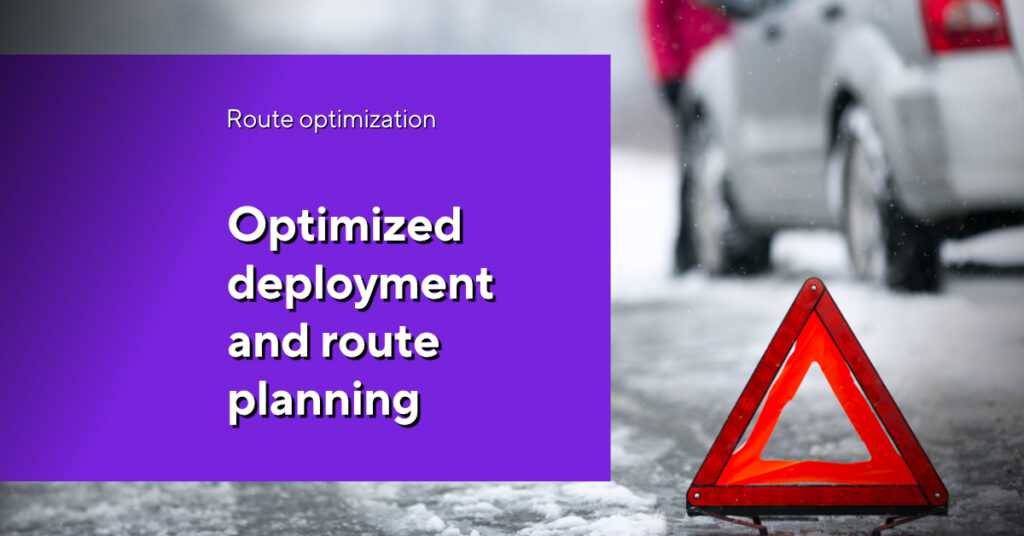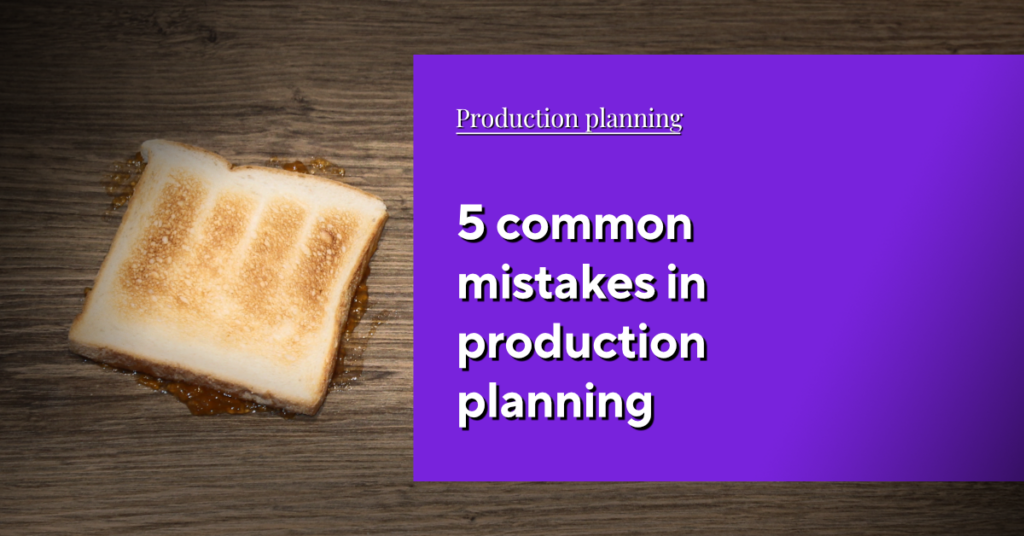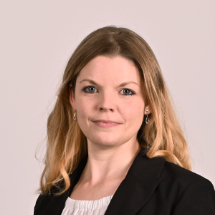Saving CO₂ emissions and costs at the same time
I recently watched a documentary about what we as humans can and must do to stop climate change. It was mainly about big investments like wind farms, better urban planning or companies that have changed their entire business concept. What is often overlooked, however, is the fact that a lot can already be achieved on a small scale – and at the same time as achieving other goals, such as reducing costs. This blog post deals with the exciting question of how mathematical optimization enables companies to reduce CO₂ emissions and save costs at the same time.
Taking responsibility - Fighting climate change
Companies have a lot of potential
Reducing CO₂ emissions in the economy is crucial for combating climate change and protecting the environment. Companies contribute significantly to the production of greenhouse gases. They therefore play a crucial role in ecology and there are many ways to reduce their ecological footprint. By implementing sustainable practices, investing in renewable energy and switching to environmentally friendly technologies, companies can help minimize the negative effects of climate change. By taking responsibility and working towards a low-carbon future, companies are not only helping to protect the environment. In addition, long-term benefits can be achieved through cost savings, improved image and regulatory compliance.
Environmental protection and cost minimization - a contradiction?
There are various reasons why companies invest less than necessary in environmental protection. One of the main reasons is often the short-term focus on profit maximization and cost savings. Investments in environmental protection measures can initially be associated with high costs and do not immediately translate into financial gains. This can make companies reluctant to invest in environmentally friendly technologies or processes.
But are environmental protection and cost savings fundamentally contradictory goals? Or can both be achieved at the same time?
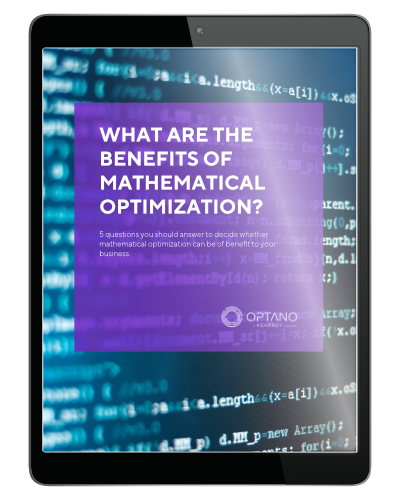
Are you interested in our factsheet?
What are the benefits of mathematical optimization?
From theory to practice
Practical examples and solutions
The answer to this question is: Of course both goals can be achieved at the same time. With the right methods, it’s actually quite simple. Mathematical optimization can help companies save costs and reduce CO₂ emissions at the same time by providing efficient solutions to complex operational challenges. By applying optimization algorithms in various areas such as supply chain management, production planning, logistics or energy requirements, companies can optimize processes and use resources more efficiently.
In the following, we use a few examples to show how mathematical optimization can not only reduce CO₂ emissions, but also cut costs.
Logistics and transportation
The amount of goods that are transported for our economy and consumption is unimaginable. According to the Federal Statistical Office, around 3.1 billion tons of goods were transported by domestic trucks in Germany alone in 2022. Rail accounted for 337.1 million tons and inland waterway transport for 182.4 million tons.
In view of these impressive figures, it is clear what an enormous impact freight transport has on the environment. Mathematical optimization can make a decisive contribution to minimizing this impact. Various variables and factors are taken into account when implementing optimized transport route planning. These include delivery locations, the quantity and type of goods to be transported, traffic conditions, delivery time windows and restrictions such as weight limits for trucks or driving bans in certain areas.
By optimizing transport routes, companies can not only save costs but also reduce their environmental footprint. More efficient journeys and fewer empty runs mean that less fuel is consumed and thus the emission of greenhouse gases such as CO₂ is reduced. This not only contributes to environmental protection, but can also improve the company’s balance sheet and increase customer satisfaction through punctual deliveries. (We show how this works with a small example in our article: Optimal route planning at the touch of a button
Resource efficiency, production processes and inventory management
In addition to transportation, the production and storage of goods also plays an important role in avoiding overproduction and waste of resources and the associated CO₂ emissions in companies. By using mathematical optimization models, companies can make their production processes more efficient, manage inventories better and thus reduce costs and environmental impact. Such models take into account factors such as production capacities, demand forecasts, stock levels, delivery times, product life cycles, transportation costs and the environmental impact of production.
With the help of mathematical optimization models, companies can calculate exactly how many products need to be manufactured to meet demand while avoiding overproduction. This not only helps to reduce inventory levels and waste of resources, but also helps to avoid unnecessary carbon emissions that would result from producing and storing unneeded goods.
Implementing eco-friendly practices through mathematical optimization can help companies reduce their environmental footprint while reducing costs and increasing the efficiency of their production and delivery processes. Ultimately, integrating environmental aspects into mathematical models helps companies to act more sustainably and make a positive contribution to environmental protection.
Energy demand optimization
Optimizing energy requirements using mathematical methods is also an important approach. By efficiently planning and controlling energy use, companies can not only reduce their operating costs, but also reduce their ecological footprint.
One example of optimizing energy consumption is the use of management systems that use mathematical models to forecast, analyze and optimize energy consumption. These systems can collect consumption data from various sources such as production processes, building automation systems or renewable energy sources to accurately determine demand.
By optimizing energy demand, companies can avoid peak loads, improve energy efficiency and reduce fossil fuel consumption. By maximizing the use of renewable energy sources such as solar, wind or hydroelectric power, companies can not only reduce the cost of conventional energy sources, but also minimize their impact on the environment.
In addition, mathematical models can help to analyze consumption data and identify potential savings, such as optimizing heating and cooling systems, using waste heat or implementing energy-efficient lighting systems.
Sustainable investment decisions
One example of sustainable investment decisions is the evaluation of investments in environmentally friendly technologies and processes. Companies can use mathematical models for cost-benefit analysis to calculate how investments in, for example, energy-efficient equipment, renewable energy or waste reduction will affect their operating costs and environmental impact.
By integrating environmental considerations into the evaluation of investment opportunities, companies can make informed decisions that offer both financial and environmental benefits. Investing in sustainable technologies can lead to long-term cost savings by increasing energy efficiency, minimizing resource waste and reducing carbon emissions.
Furthermore, mathematical methods can help companies to assess the risks and opportunities associated with sustainable investments. By simulating different scenarios, companies can anticipate the potential impact of investment decisions on their financial performance and environmental impact and plan appropriate measures.
More interesting articles
Reduce costs and CO₂ emissions at the same time
OPTANO makes it happen
OPTANO is a powerful software platform that supports companies in efficiently solving complex optimization problems in various areas. With OPTANO, companies can optimize their production processes, logistics chains, energy requirements and investment decisions in order to operate more sustainably and reduce their carbon footprint. The software offers powerful algorithms and tools to solve complex optimization problems, analyze scenarios, simulate decisions and provide well-founded recommendations for action.
Thanks to its user-friendly interface and flexible customization options, OPTANO enables companies to develop tailored optimization solutions that meet their specific requirements and objectives.
Overall, OPTANO can help companies implement complex optimization strategies that enable them to simultaneously reduce costs and CO₂ emissions, thereby increasing their competitiveness. By using OPTANO, companies can drive sustainable change and make a positive contribution to environmental protection.
A first step with little effort
Let's get started together!
Large investments and a general rethink are certainly necessary in many areas in order to stop climate change. But with mathematical optimization, we can achieve a lot in the short term and with relatively little effort while we work on the big solutions. Let’s take this step together!
Have you got your factsheet on this topic yet?
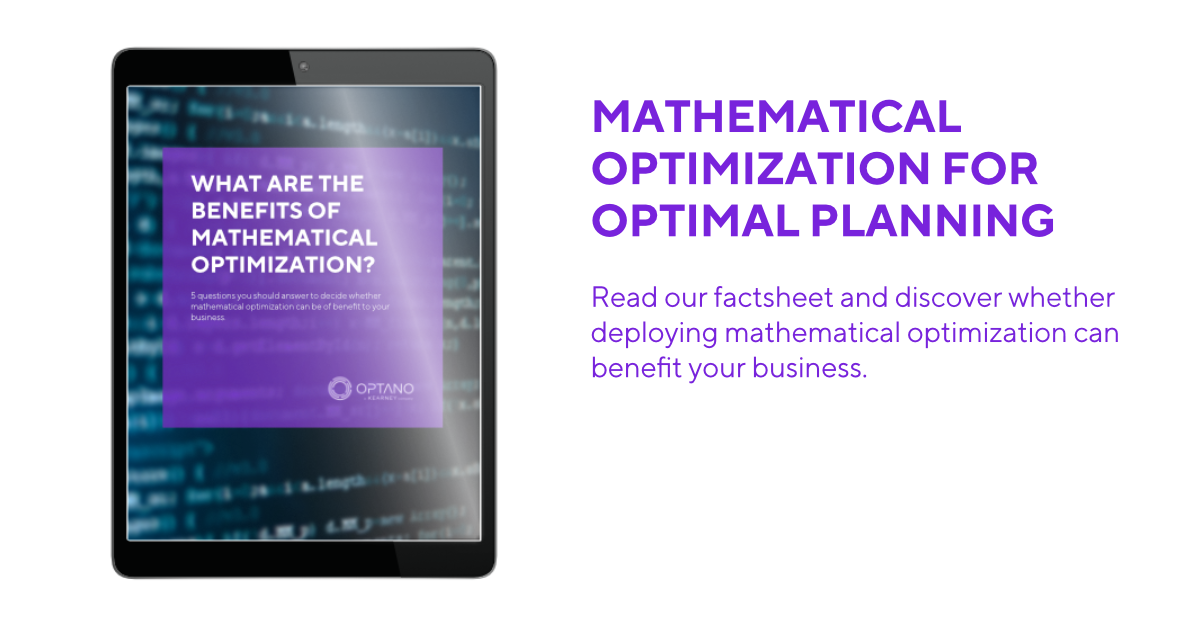
In our factsheet “What are the benefits of mathematical optimization?” we ask 5 questions to help you assess whether mathematical optimization brings benefits to your organization.
To obtain our factsheet, all you need to do is enter your contact details in the space below. A pop-up window will then open to download the whitepaper. Please note that by providing us with your email address, you agree that we may contact you on this topic. You may revoke this agreement at any time by contacting privacy@optano.com.

